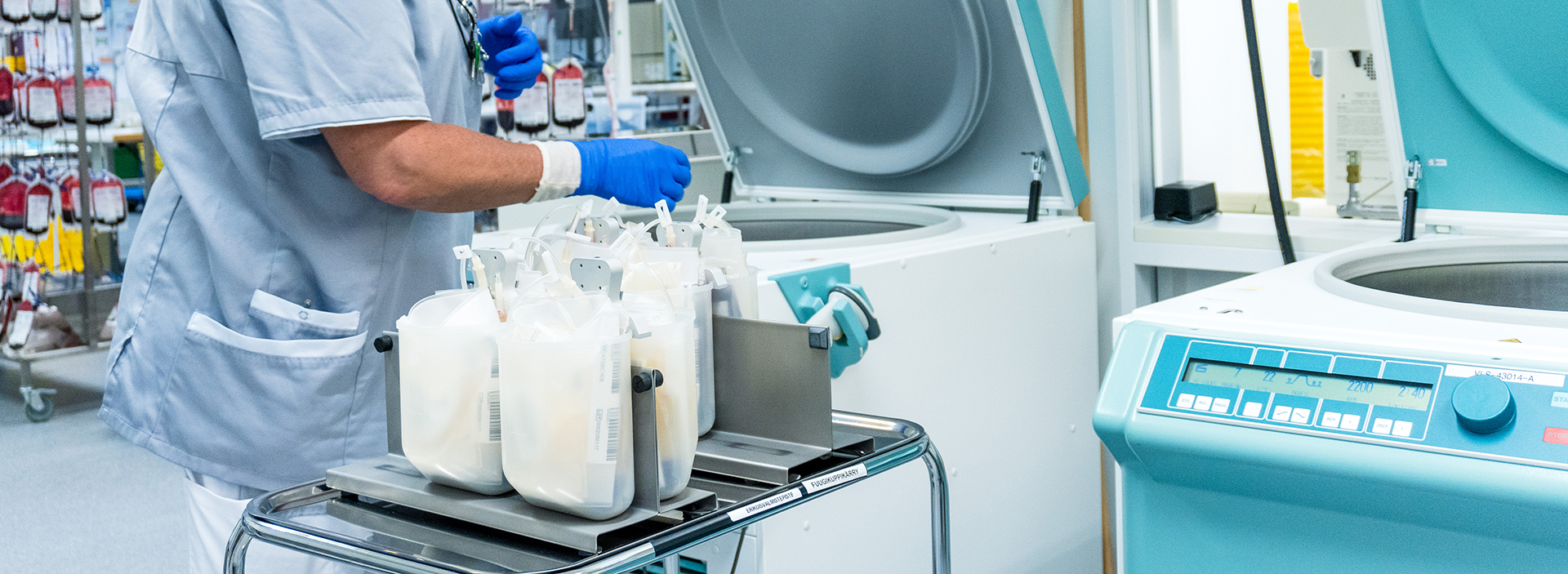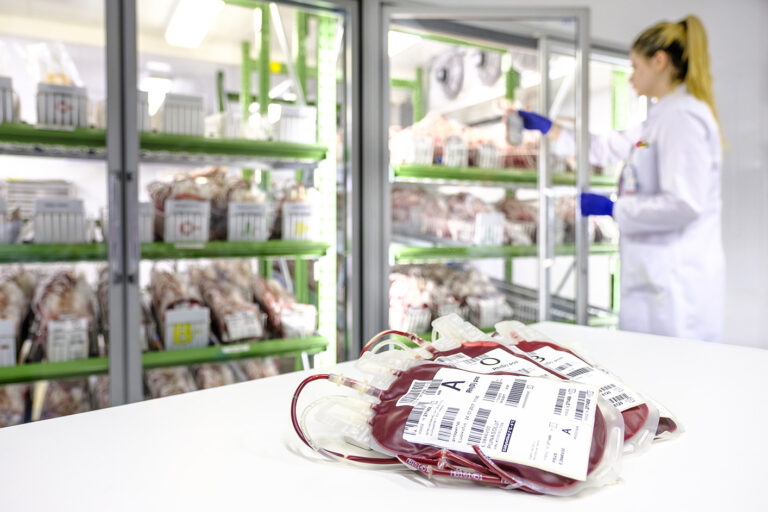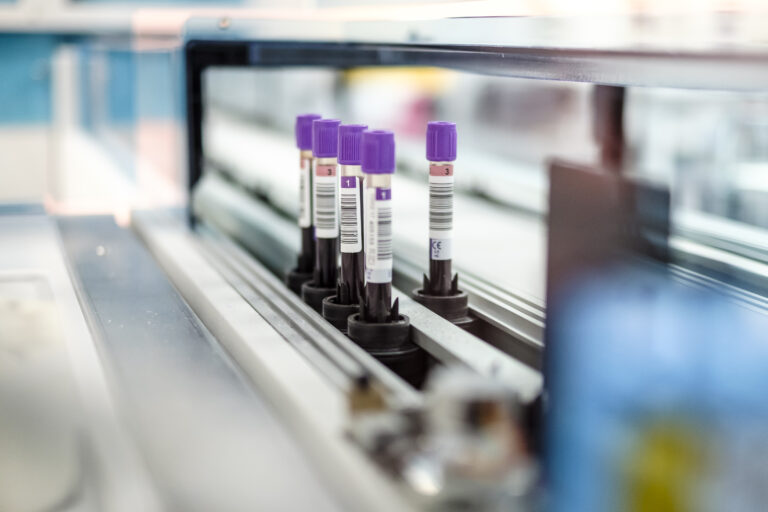What happens to donated blood?
Blood goes through many stages on its journey from donor to patient.

Blood cannot be made artificially, so we need help from voluntary donors. Donors can give blood at the Blood Service’s fixed offices and at blood donation events. A blood bag fills up in approximately 5-10 minutes. Drinks and snacks are always available after donation.
The donated blood is packed into cold boxes for transport from donation sites all across Finland to the Vantaa production plant. As soon as the blood samples arrive, they are examined for blood group factors and carefully tested for serious infections.
The production of blood products begins early in the morning. First, the blood is separated into three parts using a centrifuge. White blood cells are removed from the red blood cells. One thrombocyte, or platelet, product is made from blood from four donors with the same blood group. The plasma is frozen and delivered as a raw material for medicines.
After tests for viruses have been carried out, the blood products are released for use. They are usable for five weeks after a donation. Platelets are only usable for five days. The products are stored in the Blood Service’s warehouse until they are needed in hospitals.
Hospitals order blood products as needed. The Blood Service takes care of transporting the products to hospital blood centres.
Each year in Finland, 40,000 patients need blood products. Red blood cell products are needed for surgical patients, accident victims, women in labour, and premature babies, for example. Platelet products are needed for e.g., cancer patients. Medicines made from plasma are needed for patients with immunodeficiency, for example.
Over 700 blood donors are needed in Finland every weekday in order to ensure that there is a constant supply of blood products available for patients who need them.

